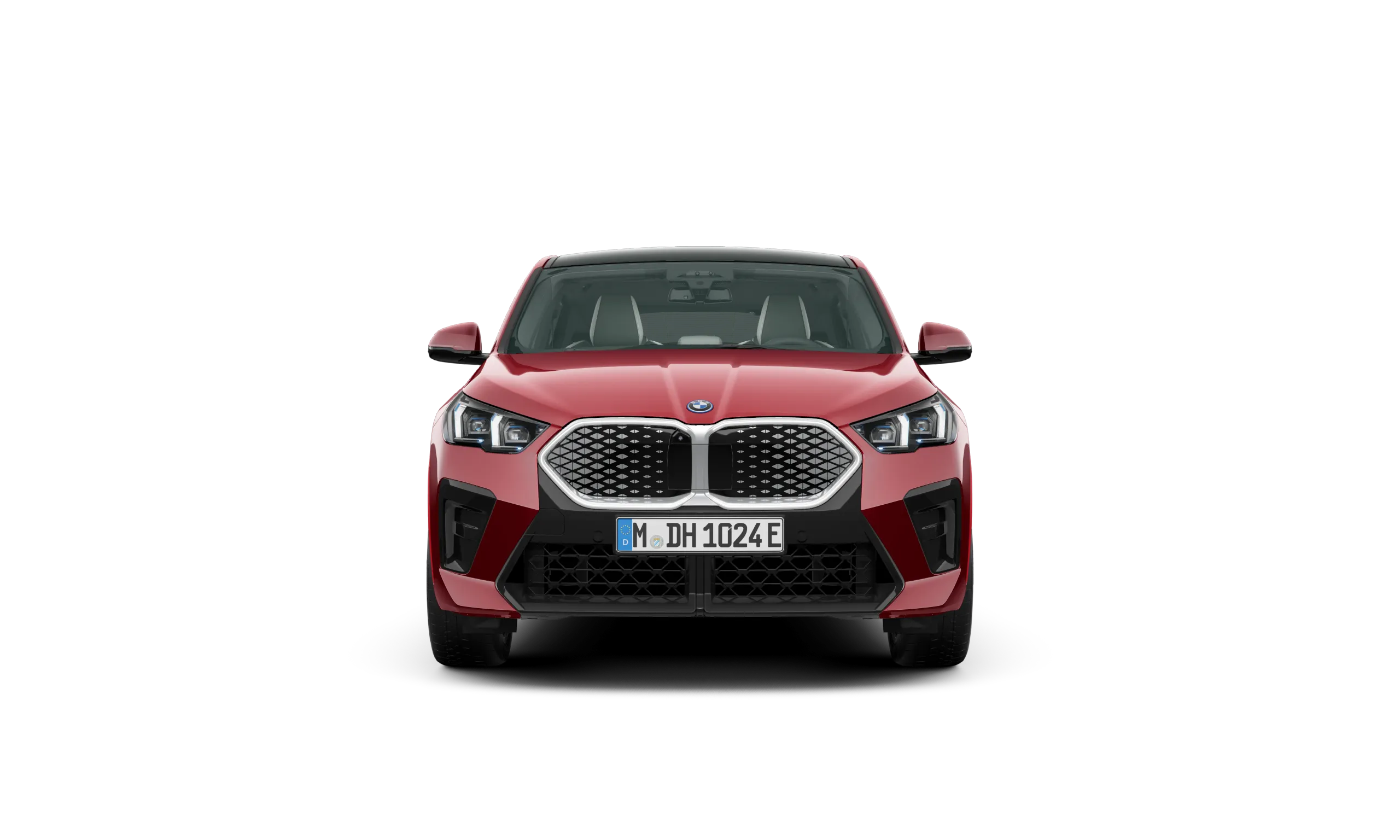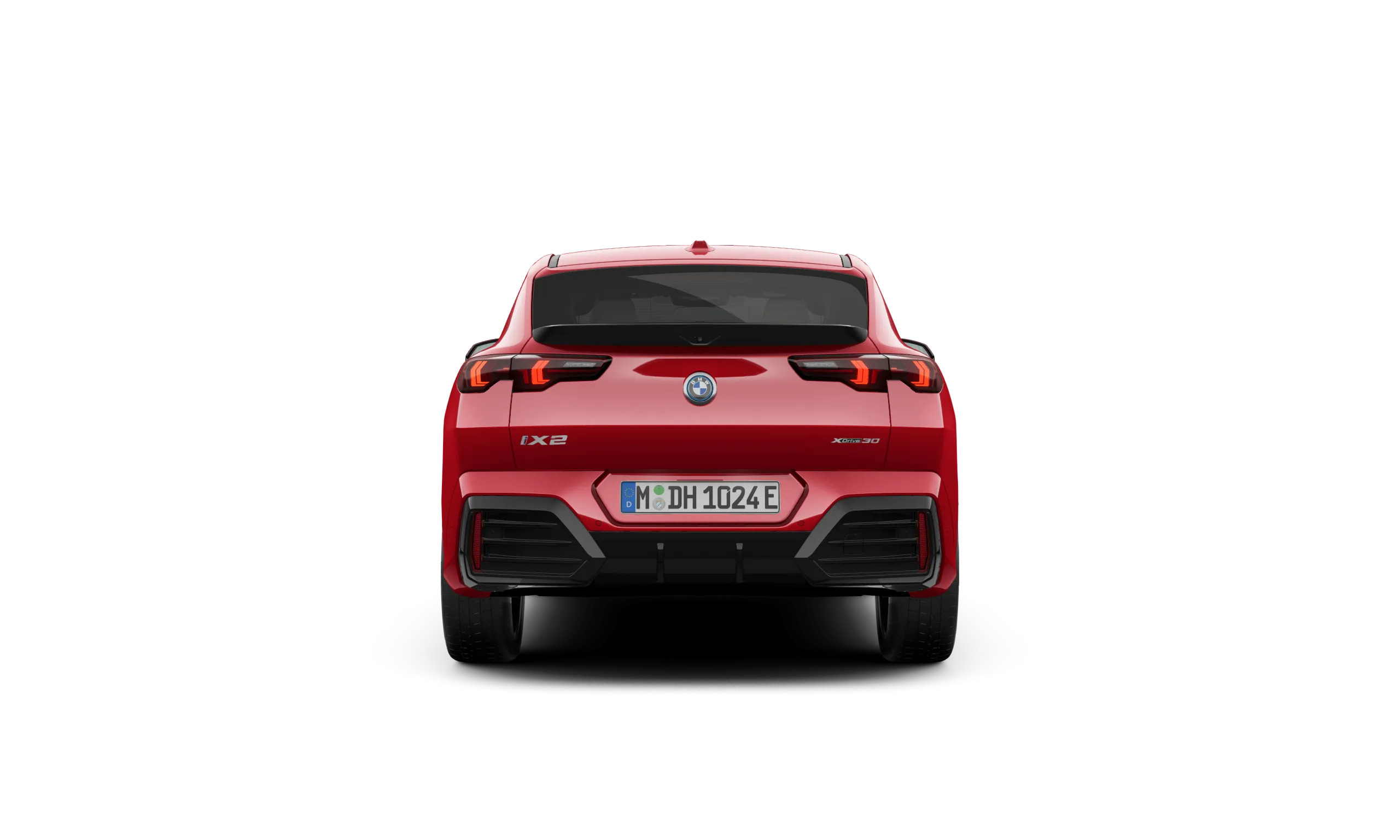TECHNICAL DATA FOR THE BMW iX2.
Fuel type
Electric
Power in kW (hp)
150 (204) 1
Torque in Nm
250
Transmission
1-speed, automatic
Drivetrain
Front-wheel drive
Power in kW (hp)
150Kw / 204Hp
(Nominal) torque in Nm
250
Acceleration 0–100 km/h in s
8.6
Top speed in km/h
170
CO2 emissions, combined WLTP in g/km
0
Energy consumption, combined WLTP in kWh/100 km
15.6
Electric range, WLTP in km 3
478
Battery capacity in kWh
64.8
Added range after 10 minutes of high-power charging in km 4
132-152
Maximum charging power AC in kW
22
Charging time AC 0–100% in h
6.5
Maximum charging power DC in kW
130
Charging time DC 10–80% in min
29



Length in mm
4,554
Width in mm
1,845
Height in mm
1,560
Wheelbase in mm
2,692
Vehicle curb weight in kg 5
1,960
Luggage capacity in l
525 - 1,400
Consumption and CO2 emissions.
All technical data are indicative only and varies as per market and configuration. For more information, please check with your local dealer for all fuel consumption and CO2 emissions.
The figures for performance, consumption and CO2 emissions refer to vehicles with standard transmission. Values in square brackets apply to vehicles with automatic transmission.
1 Temporary uprating <10 seconds in excess of specified nominal value
2 Official data for fuel consumption, CO2 emissions, power consumption and electric range was determined in accordance with the prescribed measuring procedure and corresponds to European Regulation (EC) 715/2007 in the applicable version. For ranges, data determined as per WLTP takes into account any optional equipment (available on the German market in this case). For vehicles that have been newly type approved since 1 January 2021, only the official data according to WLTP exists. For more information about NEDC and WLTP measuring procedures visit www.bmw.com/wltp
3 Range depends on various factors, in particular: individual driving style, route characteristics, outside temperature, heating/air conditioning, pre-conditioning.
4 The charging performance depends on the state of charge, ambient temperature, individual driving profile and use of auxiliary consumers. The ranges shown are based on the WLTP best case. The charging times apply to ambient temperatures of 23 degrees Celsius after a preceding drive and may differ depending on the usage behaviour.
5 The EC unladen weight refers to a vehicle with standard equipment and does not include any optional extras. The unladen weight includes a 90% full tank and a driver weight of 75 kg. Optional equipment may affect the weight of the vehicle, the payload and the top speed if the selected equipment has an impact on the vehicle's aerodynamics.
